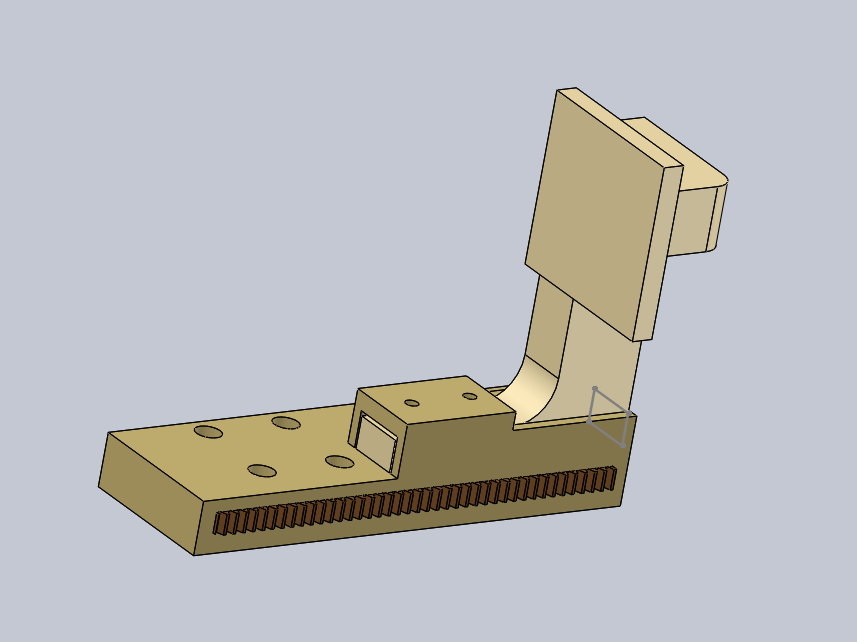Capstone I: Progress Blog #1
- John Santos
- Jan 28, 2020
- 4 min read
Updated: Sep 9, 2020
Whether it be a respiratory emergency, rescue operation, or intensive care setting, hospitals need a way to assist those whose breathing is impaired. Currently, emergency medical technicians can use either an automatic ventilator or a Bag Valve Mask (BVM for short). A BVM, as shown in Figure 1, is a manual respiratory device consisting of a face mask that is placed on the patient's nose and mouth and a large bag filled with air. The large bag is squeezed, pumping ambient or oxygenated air into the patient's airways, helping them breathe.

Figure 1. A typical Manual Bag Valve Mask
Contrary to automatic ventilators, manual ventilators such as BVMs carry many risks upon usage such as lung injury, high heart rate, and blood pH imbalance. This is because the manual BVM provides an inconsistent volume and pressure of air to the patient.
In one study, 114 individuals trained in basic life support used a 1.6 liter manual resuscitator to deliver respirations in three different ways to measure the consistency of the tidal volumes delivered. Methods tested included: using one-handed compressions (1), two-handed compressions, and two-handed half compressions. The tidal volume delivered using each of these methods varied wildly, going up to ±144 milliliters away from the average, concluding that manual ventilation performed poorly at delivering consistent volumes of air.
Another study (3) sought to find the different amounts of pressure generated during ventilation under various clinical resistances between the two genders of nurses. The study concluded with male therapists generating 91 ± 20 centimeters of water (8.92 ± 1.96 kilopascals) and female therapists generating 56 ± 18 cm H2O (5.49 ± 1.77 kPa), both of which varied too much from the target pressure to be considered safe and consistent.
In one study (2) comparing the automatic ventilator EasyCPR and manual BVM ventilation performance, Figure 2 demonstrates that there was a higher frequency range values of 400-600 milliliters in EasyCPR as compared to BVM. This range is highly desired due to the oxygen capacity of the lungs, not too much or too little to cause risks associated with hypoxia or hyperoxia, a few of the many risks associated with oxygen intake. As seen in Figure 1, there is less distribution outside of the desirable range and more consistent in terms of volume intake.

Figure 2. The Tidal Volume distribution of the BVM is more scattered compared to that of the EasyCPR.
In another study (4), 140 health care professionals were tested on using BVM with different grip strengths. The results concluded that most of these professionals had excessive ventilation. The physicians had 5.26% efficient ventilation while the nurses and first aid workers had a value of 9.56% and 6.45% efficiency, respectively. In conclusion, regardless of the grip strength on the BVM, most professionals resulted in excessive ventilation, indicating that the amount of pressure going into the BVM to provide ventilation will most likely result in failure. A design that is automated and controls the pressure going into the BVM would reduce excessive ventilation.

Figure 3. Proportion of the Quality of Compressions under different grip strengths.
As noted by all these studies, air pressure and volume intake are important factors of ventilation that are difficult to be precise with with manual ventilation, risking injury to the patient.
Furthermore, mechanical ventilators (Figure 4) are rare in low-resource settings due to its high cost and complex maintenance. A study published in the Critical Care Medicine journal analyzes billing data from 253 hospitals in the US, showing that the mean ICU cost was $31,574 ± $42,570 for patients requiring mechanical ventilation (5). A portable ventilator with circuitry costs about $12,000 (6).

Figure 4. High-cost standard mechanical ventilators
When high-end ventilators are not available, a caregiver of the patient may have to perform this procedure manually. However, pumping the bag for an extended period of time can be exhausting. Manual ventilation is labor intensive, tiring to operators, according to Pediatric Critical Care (7). The force needed to compress the bag will exhaust the rescuer if maintained for more than a few minutes (8).
All this illustrates a clear need for an automatic BVM that will monitor pressure and volume intake. Our proposed design will help reduce the risks associated with manual ventilation and will help ensure a safer, more consistent way to help patients breathe during emergency situations.
Learning about the ins and outs of respiratory care, with us having our studies rooted in Mechanical Engineering, is a challenge we must undertake to fully understand the problem at hand. To ensure a need for our project, credible references and sources such as ambulance workers, biomedical engineering professors, and those involved with prior prototypes will be contacted to help us understand the issues with current BVMs. Furthermore, in order to understand where the automated BVM will be most useful, extensive research on pre-existing medical equipment what situations they are used in is needed. Although our design may be aimed towards developing countries, the components will need to be reliable, accessible, and easily maintained. The team needs to work to ensure that there is a proper niche for our design in the medical industry.
We have several other ideas to fall back on in case we decide not to pursue the Automated Bag Valve Mask. Recycling is another issue we could address if we need to. One option is to optimize the recycling process of sorting pieces of shredded plastic to make the process of recycling more cost efficient. Research can be done to potentially develop a valuable raw material from refuse.
The third option is to create an automatic pool skimmer which would use the swimming pools return line as a source of power to clean debris. A controller will be used to control the movement of this skimmer powered by batteries that will turn on the propeller through an On/Off switch.
Footnotes:



Comments